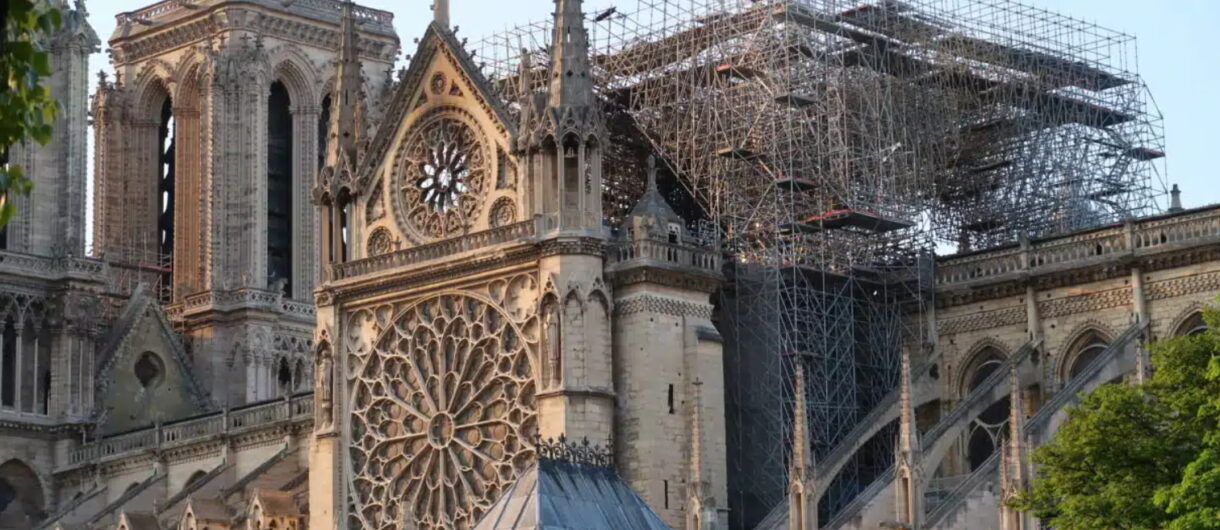
Key considerations for fire compartmentalization in historic buildings
The preservation of historic buildings against fire risk is crucial to protect their architectural and cultural value. Cases like the fire at Notre Dame Cathedral on April 15, 2019, or more recent ones such as the Copenhagen Stock Exchange fire in April 2024 and the Rouen Cathedral fire last July, have highlighted the importance of having a fire protection plan that takes into account the particularities of these buildings.
In this article, we will analyze the key challenges and the spaces that must be considered in a fire protection plan for historic buildings.
Specific challenges in fire protection for historic buildings
Fire protection in historic buildings requires a specialized approach due to the particularities that distinguish them from other constructions. Below, we analyze the main challenges that must be considered.
Flammable materials and structural aging
Historic buildings are often constructed with materials such as wood, limestone, or brick, which behave differently when exposed to fire. Additionally, due to the time elapsed since the construction of these buildings, the natural aging of materials becomes an important factor. Wood, for example, loses strength over the years, and its combustion can accelerate structural collapse. In the case of Notre Dame Cathedral, the wooden roof was one of the most affected elements, accelerating the spread of the fire.
Structural deterioration affects both flammable materials and other architectural components, such as stone or brick. Although these materials are not flammable, their resistance decreases over time and can weaken due to prolonged exposure to environmental factors like humidity or temperature variations. In fires like the one at the Copenhagen Stock Exchange in 2024, aged support structures and weakened roofing systems contributed to the partial collapse of the building.
Architectural restrictions
One of the greatest challenges in the protection of historic buildings is integrating modern fire protection systems without compromising the building’s visual and architectural integrity. Heritage protection regulations prohibit changes that significantly alter the original structure, leading to the search for solutions that are discreet or invisible.
However, these solutions are not always easy to implement. Most historic buildings were not designed to integrate modern mechanical systems, so limited spaces in hallways or roofs make it difficult to install fire detection and control equipment. The preservation of architectural details, such as frescoes, moldings, or stained glass, also presents an additional challenge for the installation of these systems.
Lack of structural documentation
Many historic buildings have undergone various renovations and modifications over the centuries, making it difficult to have a detailed knowledge of their current structure, as sometimes some interventions were not properly documented, or original plans have been lost.
To mitigate this issue, laser scanning and 3D modeling techniques are used to accurately map the building’s structure and detect possible weaknesses. These technologies allow fire protection teams to identify vulnerabilities in areas such as roofs, foundations, and internal walls.
Key spaces requiring compartmentalization in historic buildings
Compartmentalization is an essential measure to contain the spread of fire in any building, but in historic buildings, certain spaces require special attention due to their peculiarities.
Underground areas and crypts
These areas are often more susceptible to fire risk. The lack of adequate ventilation is one of the main reasons. In many cases, crypts and other underground areas lack modern ventilation systems, which increases the accumulation of smoke and toxic gases in the event of a fire. Additionally, the lack of smoke control causes these areas to act as heat traps, promoting the spread of fire to other parts of the building.
Roofs and domes
Roofs and domes of historic buildings present a high risk of fire spread due to the use of flammable materials like wood, as seen earlier. In addition to flammability, the height and complex design of these areas make it difficult to install modern fire protection systems. These structures are often not designed to support additional loads or integrate extinguishing equipment, making it essential to use systems that limit fire spread without altering the original aesthetics.
Storage areas for valuable objects
In historic buildings, areas that house works of art, manuscripts, and other cultural assets present a high risk of irreplaceable loss in the event of a fire. Additionally, these spaces often have climate control systems to preserve objects from degradation, which can complicate the installation of traditional fire protection measures.
Advantages of fire curtains and smoke barriers in historic buildings
Tecnitex’s compartmentalization solutions provide an innovative and effective alternative for fire protection in historic buildings. The fire curtains and smoke control curtains are made from technical fabrics such as fire-resistant fiberglass, offering excellent fire resistance without adding significant structural loads to the building.
Moreover, these curtains are designed to remain discreetly hidden until their activation, which allows the original aesthetics of the building to be preserved. Additionally, their ability to compartmentalize spaces and contain both fire and smoke allows architects and designers to eliminate the need for non-load-bearing firewalls, optimizing space usage and ensuring compliance with fire protection regulations.
If you have a new project of this nature and want to know more about compartmentalization solutions, do not hesitate to contact us.